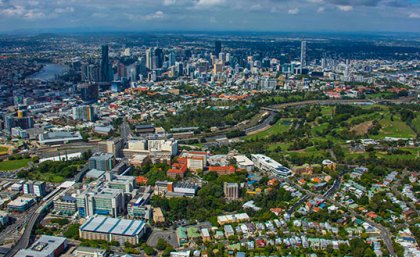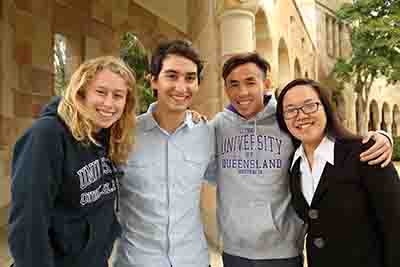
International students from Asia prefer the low-density lifestyle they’ve experienced in Brisbane, according to a University of Queensland study.
The research, by Dr Dorina Pojani and School of Earth and Environmental Sciences graduate Jack Kerstens, involved face-to-face interviews with students who had previously lived in dense high-rise settings in crowded cities like Singapore or Kuala Lumpur.
Dr Pojani said that 68 per cent of those interviewed revealed the benefits of living in low-density cities included greater housing affordability, privacy, peacefulness and better access to open space.
“Brisbane living is a unique experience for international students who haven’t seen suburban sprawl before,” Dr Pojani said.
“Most perceive Brisbane’s suburban lifestyle, which is often in close proximity to nature, as being beneficial to their health and to the environment.
“The ability to drive a private car, or live in spacious housing with easy access to parkland and major amenities, is a luxury for many students and they’re making the most of it.”
While this might be a positive outcome for the students who have made Brisbane their new home, it does raise concerns about the future of more dense, sustainable development.
“High-density housing is generally more environmentally-friendly, requiring less energy for transportation and living, and less land-clearing and infrastructure expansion,” Dr Pojani said.
“These findings may indicate that, given the opportunity, most people find a suburban, car-oriented lifestyle desirable, which expands our collective environmental footprint.
“As planners, our hope was that Asian youth migration might be able to transform Australian cities from sprawling to more compact, but the findings were contrary to our expectations.
 “If low-density lifestyles are a preference for the majority, then city planners are going to have to reconcile this with the sustainability benefits that high-density living can offer.”
“If low-density lifestyles are a preference for the majority, then city planners are going to have to reconcile this with the sustainability benefits that high-density living can offer.”
However, 32 per cent of interviewees were resistant to Brisbane’s sprawl, citing a lack of access to amenities, the cost of living and the isolation that comes with low-density housing.
“Some of our participants, even living in Brisbane’s inner-ring suburbs, believe that these spaces don’t compare with the liveliness and vibrancy of their home cities, or they’re lonely and feel disconnected from their neighbours,” Dr Pojani said.
“There really just needs to be more choice, with small and large spaces in high and low-density regions, so we can offer a range of options for our international visitors to feel at home here in Brisbane.”
The study has been published in Australian Planner.
Media: Dr Dorina Pojani, d.pojani@uq.edu.au, +61 473 989 847; Dominic Jarvis, dominic.jarvis@uq.edu.au, +61 413 334 924.
.jpg)









